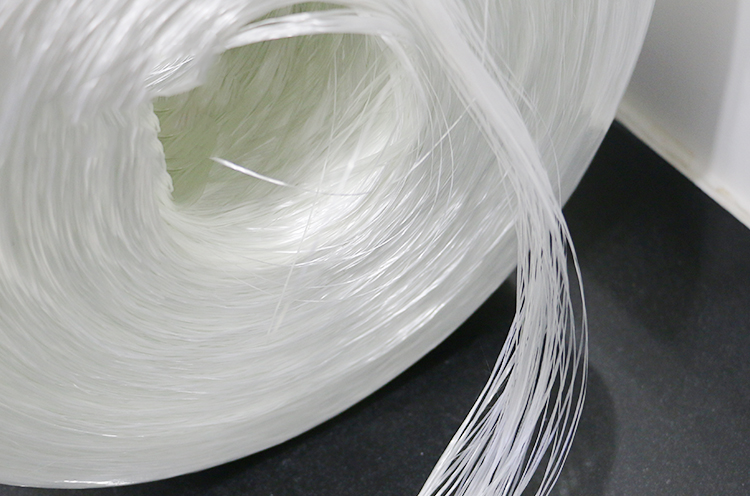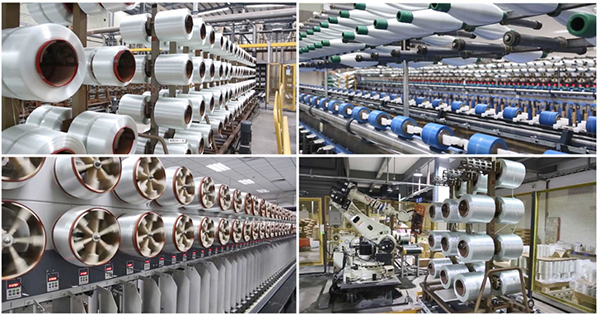Email: info@hdfiberglass.com Whatsapp: +86 15200033566
Views: 0 Author: Site Editor Publish Time: 2024-05-13 Origin: Site








"Fiberglass," also known as "glass wool" or "glass fiber," is a new reinforcing material commonly used in various sectors of the national economy, including as reinforcement in composite materials, electrical insulation, thermal insulation, and circuit boards. Its single fibers range from a few micrometers to twenty micrometers in diameter, approximately 1/20 to 1/5 the thickness of a human hair. Each bundle of original fiber is composed of hundreds or even thousands of these single fibers.
Fiberglass is produced from six types of minerals including beryl, quartz sand, limestone, dolomite, borocalcite, and boromagnesite through processes such as high-temperature melting, drawing, winding, and weaving. It is an excellent inorganic non-metallic material with a variety of types. Its advantages include good insulation, strong heat resistance, corrosion resistance, and high mechanical strength, but it is brittle and has poor abrasion resistance.
Fiberglass has been produced for several centuries, but the earliest patent was granted in 1880 to Prussian inventor Hermann Hammesfahr (1845-1914) in the United States.
The mass production of glass fibers began in 1932 when Owens-Illinois researcher Games Slayter directed a jet of compressed air into a stream of molten glass, creating fibers. This method of producing glass wool was patented for the first time in 1933. Owens joined Corning in 1935, and Owens Corning began producing their patented "Fiberglas" (spelled with one "s") in 1936. Initially, fiberglass was a type of glass wool where the fibers trapped a significant amount of gas, making it useful as an insulator, especially at high temperatures.
In 1936, DuPont developed a suitable resin for bonding fiberglass with plastic to produce composites. The ancestor of modern polyester resins was the melamine resin of 1942, which used peroxide curing systems. With the combination of fiberglass and resin, the gas content was replaced by plastic, reducing insulation properties to typical plastic values, but now the composite materials showed strength and prospects as structural and construction materials. Many fiberglass composites continued to be referred to as "fiberglass" (a generic name), which also applied to low-density glass wool products containing gas instead of plastic.
Ray Greene of Owens Corning is credited with producing the first composite boat in 1937, but there was no further development at that time due to the brittleness of the plastics used. It is reported that a passenger ship was built with plastic materials in Russia in 1939, and an airplane’s fuselage and wings were built in the United States. The first car with a fiberglass body was the 1946 Stout Scarab prototype, but this model did not go into production.

The main components include silicon dioxide, aluminum oxide, calcium oxide, boron oxide, magnesium oxide, sodium oxide, etc. Based on the alkali content in the glass, it can be divided into:
Alkali-free fiberglass (sodium oxide 0% to 2%, aluminum borosilicate glass)
Medium-alkali fiberglass (sodium oxide 8% to 12%, boron-containing or boron-free sodium calcium silicate glass)
High-alkali fiberglass (sodium oxide above 13%, sodium calcium silicate glass).
Features: Fiberglass has higher temperature resistance than organic fibers, is non-combustible, corrosion-resistant, has good thermal and sound insulation, and high tensile strength and good electrical insulation. However, it is brittle and has poor abrasion resistance. Used to manufacture reinforced plastics or reinforced rubber, fiberglass has the following characteristics:
High tensile strength, low elongation (3%).
High elastic modulus, good rigidity.
Large elongation within the elastic limit and high tensile strength, thus absorbing significant impact energy.
As an inorganic fiber, it is non-combustible and chemically resistant.
Low water absorption.
Good dimensional stability and heat resistance.
Good processability, can be made into strands, bundles, felts, fabrics, and other different forms.
Transparent and can transmit light.
Good adhesion with resin.
Economically priced.
Non-flammable, can melt into glass beads at high temperatures.
There are two fiberglass production processes: secondary forming by the crucible drawing method and primary forming by the pool kiln drawing method.
The crucible drawing method is complex, first melting glass raw materials into glass balls at high temperatures, then remelting the glass balls and drawing them into fiberglass filaments at high speeds. This process has many disadvantages such as high energy consumption, unstable molding processes, and low labor productivity, and has been largely phased out by large fiberglass manufacturers.

In the pool kiln drawing method, materials like beryl are melted in a furnace into a glass solution, bubbles are removed, and the solution is then transported through channels to a multi-hole plate where it is drawn into fiberglass filaments at high speeds. Furnaces can be connected to hundreds of plates through multiple channels for simultaneous production. This process is simple, energy-saving, stable, and efficient, suitable for large-scale, fully automated production, and accounts for over 90% of global fiberglass production.
Based on the raw materials selected during production, fiberglass can be divided into alkali-free, medium-alkali, high-alkali, and special fiberglass; based on the appearance of the fibers, it can be divided into continuous fiberglass, cut-length fiberglass, and glass wool; based on the diameter of the single filaments, it can be divided into ultrafine fibers (diameter less than 4μm), advanced fibers (diameter 3-10μm), intermediate fibers (diameter more than 20μm), and coarse fibers (diameter around 30μm). Based on the performance of the fibers, it can be divided into ordinary fiberglass, strong acid and alkali resistant fiberglass, strong acid resistant fiberglass, high-temperature resistant fiberglass, high-strength fiberglass, etc.
According to the production capacity share of companies by country, China has become the world's largest fiberglass production base with a well-developed industrial chain. Domestic supply also shows characteristics of an oligopoly, with China's Jushi, Taishan Fiberglass, and Chongqing International holding more than 60% of the market share. The heavy asset, capital-intensive nature, and difficulty in acquiring core technologies ensure that leading companies in the fiberglass industry can continuously accumulate scale advantages, reduce costs, and strengthen technological research and development, further reducing costs through technological improvements.
Corporate Visual Identity of Hebei HaiDing Fiberglass Manufacturing Co., Ltd.
What does the price increase of fiberglass products (chopped strand mat) mean?
Fiberglass Materials for Electrical Insulation and Electronics Applications
Invitation | Hebei HaiDing Fiberglass Manufacturing Co., Ltd. 2024-2025 Trade Show Forecast
5 Essential Aspects of Electronic Grade Fiberglass Cloth You Should Know